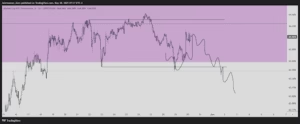Just three years ago, the approval of spot Bitcoin ETFs was seen as the ultimate gateway for cryptocurrencies into mainstream finance. The perception was that these instruments would revolutionize the investment landscape; however, the reality has proven more complex. As institutional participation in the crypto market continues to grow, so do the expectations for innovative financial products. Enter Exchange-Traded Notes (ETNs), a financial instrument that could potentially reshape how investors engage with digital assets.
Exchange-traded funds (ETFs) have provided a straightforward way for institutions to gain exposure to Bitcoin (BTC) and Ethereum (ETH) without dealing with the complexities of private keys and custody issues. However, ETFs have a significant limitation: they primarily track prices. In a market notorious for its volatility, merely tracking price can leave investors vulnerable when the market becomes stagnant.
With expectations shifting, institutional players are venturing beyond simple exposure to Bitcoin’s price movements. They are now demanding diversified options that can generate returns beyond mere appreciation. Traditional exchange-traded products allow access to dividends, interest-bearing instruments, and complex structured vehicles, and now, ETNs are emerging to meet similar needs in the crypto sector. These products offer structured exposure to a variety of digital assets, including staking-based tokens, DeFi portfolios, and multi-asset investment baskets. The rapid expansion of ETNs in Europe illustrates this trend, catering to investors’ demands for products that do more than track price.
Regulatory Landscape: How MiCA Influences ETNs
The European Union’s Markets in Crypto-Assets Regulation (MiCA) plays a crucial role in this development. MiCA establishes a unified legal framework for crypto assets across EU member states, significantly enhancing operational transparency and regulatory clarity. This regulatory environment strengthens investor confidence, as it requires higher capital standards and operational transparency from ETN issuers, effectively lowering credit risk that typically accompanies debt securities.
In stark contrast, the United States remains hesitant and slow-moving with the SEC’s cautious approach towards crypto regulations. This delay hinders the emergence of versatile financial products like ETNs, leaving American investors at a disadvantage. The regulatory gap between Europe and the U.S. could trigger a structural shift in crypto investments, where traditional ETFs may no longer suffice for those seeking more sophisticated investment opportunities.
The Path Forward for Institutional Investors
While ETFs continue to hold significant brand power in North America, the demand for yield-bearing ETNs is growing stronger. As institutional investors shift their focus toward innovative structures that offer more than passive exposure, ETNs present a promising solution for those looking to capitalize on both bear and bull markets. Critics may argue that newer DeFi assets are too risky, but the inflows into ETNs suggest a robust appetite for yield among savvy investors.
In conclusion, as the landscape of digital finance evolves, the future of crypto investment lies not merely in passive speculation but in dynamic, yield-generating products. ETNs are carving out a niche that not only meets institutional needs for diversification and yield but also aligns with regulatory expectations for transparency and security. In a world where complacency is not an option, ETNs could well become the main event in the next chapter of crypto investing.





